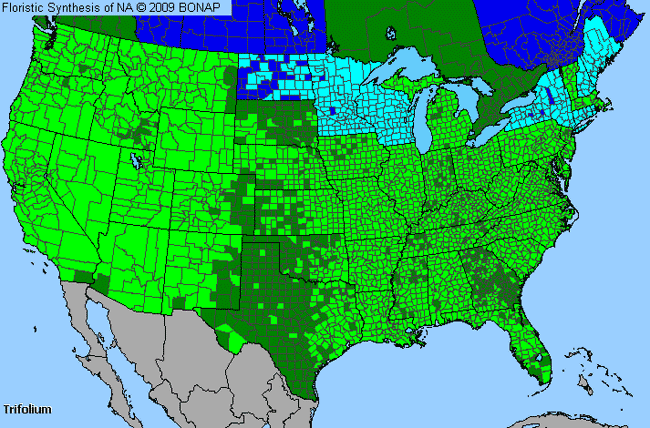Clover (Trifolium)

Clover Genus Details

Many people recognize clover as a 1-3 inch plant growing amongst their otherwise well-manicured lawns. Clover is primarily insect-pollinated. The pollen-bearing structures (stamens) are concealed in the fold of the lower petal, and are not exposed except by the action of an insect. Usually consisting of three tear-drop-shaped leaves, an occasional four-leafed clover will appear, and is said to bring about good luck in legends. Clovers are common icons used to represent anything Irish (at least in the U.S. popular culture).
Clover Allergy Info

Despite the low amount of pollen shed, several species have been suspected of causing allergy problems.
Clover Pollen Description

Trifolium grains are prolate to subprolate; the amb triangular, rounded-triangular or with convex sides. The grains are reticulate.
Pollen grains are small (25-28 X 18-20 micrometers).
Species in This Genus

Allergenicity Legend:
 Mild Allergen |
Mild Allergen |
 Moderate Allergen |
Moderate Allergen |
 Severe Allergen |
Severe Allergen |
 Allergy Test Available
Allergy Test Available
Clover (Trifolium) is a genus of the FABACEAE family.
This genus includes the following allergenic species:
This genus includes the following allergenic species:














